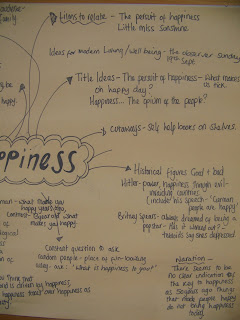9/11 State Of Emergency
Type of Documentary
Fully Narrated ,There is an offscreen voiceover. The narrator is very factual and very informative and is constant throughout the whole 73 minutes.
Themes
The themes included within this documentary are The terrorist attack on September the 11th, On the World Trade Center, New York city and on the Pentagon, America. Another theme that is shown is Death, as many people lost their lives and this is shown in the feature lengh documentary.
Narrative Structure
This documentary has a Linear structure.
It has a Beginning, Middle and End. The beginning shows footage from the morning of September 11th, before anybody was aware of the events that were about to take place. Normal everyday worklife for thousands of Americans, the documentary then went on to the middle in which actual footage of the terrorist attack was shown and the shock and devestation it had caused accross America. There are numerous flashbacks andreconstructions of when the plane was in the air and where it all started, and when flight 11 hit the world trade center. The documentary shows through interviews how this effected every type of individual involved in the destruction caused that day. From the fire fighters who were making split second decisions in order to save lives, to those who were lucky to have had their lives saved.
Camerawork
Alot of cutaway shots are used from events throughout the whole day, from being on the plane, people recieving phonecalls about what was going to happen from the flight attendant Betty Ong, up until the plane hit the World Trade Center. Actual handheld footage from locals was shown, the footage was shakey which created a surealism, that what was going on was unfortunatly real life and America was under attack.
Extreme close ups of Americans on the ground watching the attack were used to show the devestation on their faces and their shocking reactions. Also an extreme close up is used when former President George Bush found out the news in a school classroom in Florida, an extreme close up was used to show the reaction given. The camera pans around the ground around the world trade center, to show the effect not just inside the bulding but in surroundng areas on the streets on New York City.
Mise - en Scene
The World Trade Center is the majority of the background and what is going on throughout the whole documentary. The streets of the city are also shown. Also when interviewed the interviewees have a black background which has connotations of darkness and death. The pentagon, a second place of attack is also shown.
Sound
Non-digetic sound is used in the background as music to create an effect on the viewe, to tug at their emotions. Most have an effect of sadness and dispair. As one man is telling his story, music and cutaway shots of his office where he worked and narrowly escaped death are shown and non-digetic music in the background creates suspense as he is telling his story and the music is built up until he describes how he finally got out. Ambulance and fire brigade sirens are also sounded alot thoughout the documentary, these reinact and give the audience a feeling of what the day would have sounded like, loud and disruptive.
Also calls that were recorded on the day from the flight attendant are featured as voiceovers, over cutaway shots of the goings on. President Bush makes a speech, but in the edit a desicion is made to have non-digetic instrumental slow music over it, creating sadness and disbelief.
Editing
In the edit of the Documentary, non-digetic sound is added, Voiceovers of News reports from American news chanels that morning, added over real footage shown. This creates effect as when the footage is being shown the story is also being told. Also alot of quick movement shots, create drama and suspence. In the edit a decision is made about the interviews, when the interviews are shown their is a black background for mise-en scene and curusco lighting is used, to shadow the background but have a spotlight effect on the interviewee.
Archive Material
Graphics
Onscreen text aswel as a voiceover of what was said on recorded phonecalls of the day to police. Also graphics were used to introduce people E.g. Andrew Cord - President Bush's 'Right hand man'. Graphics of dates were used also.


